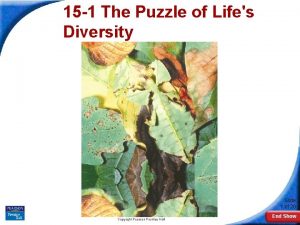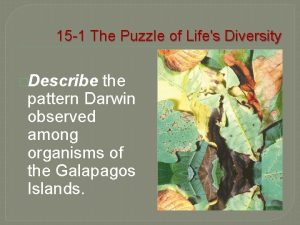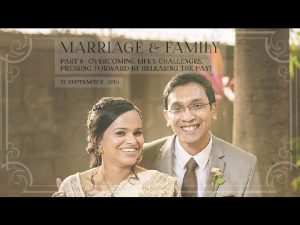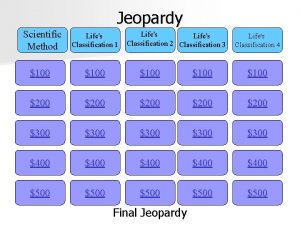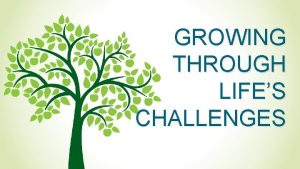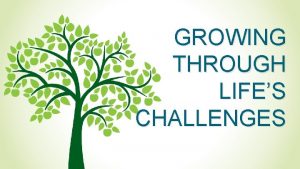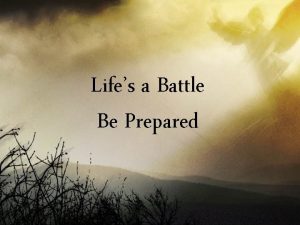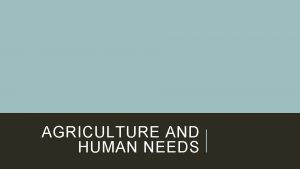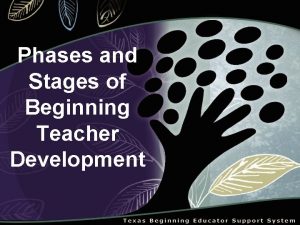Lifes Stages and Human Needs Chapter 3 Section












- Slides: 12

Life’s Stages and Human Needs Chapter 3 Section 1 Page 52

Erickson’s 8 Stages of Life • Erik Erickson is a pioneer in psychology. • Psychology – the scientific study of behavior of the mind. • Theory divides the human life span into 8 stages. Each stage presents different developmental tasks. One must successfully complete earlier tasks before moving on to later ones.

8 Stages of Life • • Infancy (0 -1) Toddler stage (1 -2) Preschool age (3 -5) School age (6 -12) Adolescence (13 -20) Young Adulthood (21 -40) Adulthood (41 -60) Older Adulthood (61 and over)


Human Needs According to Maslow • Abraham Maslow described life’s tasks (human needs) in a hierarchy (ladder system). • Hierarchy – a ranking system in which each thing is placed above or below others. • According to Maslow people must meet basic needs before climbing the ladder before they can think about higher needs.

Maslow’s Hierarchy of Needs 1. 2. 3. 4. 5. Physiological needs Safety Love Esteem Self-Actualization Needs

Maslow • Most basic needs are related to survival – needs for food, clothing and shelter (physiological needs). • Next are needs to feel physically safe (safety needs). • If safe and secure, people are free to notice their needs to be loved and to feel emotionally secure (love needs).

Maslow • If those needs are met, people can try to get in touch with their needs for respect and esteem. • If stage 4 is achieved, people can advance to self-actualization. This is the realization of their full potential: becoming “all that they can be. ” Only 1 -2 % ever develop that far.

Erikson / Maslow • Personality develops throughout life, according to Erikson. The development is propelled by the needs in Maslow’s hirarchy.

Key Terms • Personality – the characteristics of a person that are apparent to others • Self-image – the characteristics that a person sees in himself or herself • Variables – changeable factors that affect outcomes

Key Terms • Needs – Urgent wants for necessary things • Self-Actualization – The reaching of one’s

Basic Differences What are the differences between Erikson and Maslow? • Erikson theory says tasks progress primarily by age. • Maslow theory says they develop by needs.
 Section 15-1 the puzzle of life's diversity
Section 15-1 the puzzle of life's diversity Section 15-1 the puzzle of lifes diversity
Section 15-1 the puzzle of lifes diversity Human needs and human development
Human needs and human development Chapter 8 human needs and human development
Chapter 8 human needs and human development Organizing lifes diversity
Organizing lifes diversity Circle lifes
Circle lifes 4 lifes
4 lifes When upon life's billows
When upon life's billows Diversity and human needs and development
Diversity and human needs and development Primary needs and secondary needs
Primary needs and secondary needs Primary needs and secondary needs
Primary needs and secondary needs Primary needs and secondary needs
Primary needs and secondary needs Strategic gender needs and practical gender needs
Strategic gender needs and practical gender needs
